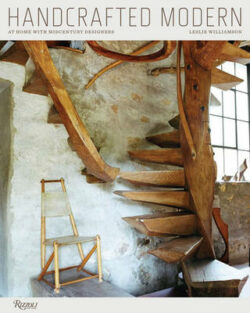With Intention to Build
$89.99
Out of stock
Alert me when product is restocked
Description
Moshe Safdie claims that probably more than fifty percent of his work is unbuilt, and upon review he considers that unbuilt work to be some of it is the most significant work he’s done! In this richly photographed book, replete with detailed diagrams, sketches, models and studies, Moshe Safdie explains that for those who design in order to build, not succeeding in building is not a failure – there are many different reasons why things don’t get built, but they form a fascinating track through one’s thoughts and career; also a historical reference of the social and political forces at play at the time. This important volume is not only a treatise on Safdie’s unrealised concepts but also a wonderful account of how there is valuable heritage to be mined in the unbuilt. Includes a number of significant projects from around the globe, including the following: Habitat Original Proposal, Montreal, Quebec, Canada 1964; Habitat New York II, New York, New York, United States 1967; San Francisco State, College Student Union, San Francisco, California, United States 1967; Pompidou Centre, Paris, France 1971; Western Wall Precinct, Jerusalem, Israel 1972; Supreme Court of Israel, Jerusalem, Israel 1985; Columbus Center, New York, New York, United States 1985; Ballet Opera House, Toronto, Ontario, Canada 1987; Museum of Contemporary Art, Stuttgart, Germany 1990; Superconducting Super Collider Laboratory, Waxahachie, Texas, United States 1993; Incheon Airport, Incheon, Korea 2011; Jumeirah Gateway Mosque, Dubai, UAE 2007; National Art Museum of China, Beijing, China 2012. Moshe Safdie is an architect, urban planner, educator, theorist, and author. Over a celebrated 50-year career, Safdie has explored the essential principles of socially responsible design with a distinct visual language. A citizen of Israel, Canada and the United States, Moshe Safdie graduated from McGill University. After apprenticing with Louis I. Kahn in Philadelphia, Safdie returned to Montreal to oversee the master plan for the 1967 World Exhibition. In 1964 he established his own firm to realise Habitat ’67, an adaptation of his undergraduate thesis and a turning point in modern architecture. Author of several books and a frequent essayist and lecturer, Safdie’s global practice includes projects in North and South America, the Middle East, the developing world and throughout Asia and Australia. Projects span a wide range of typologies, including airports, museums, performing arts, libraries, housing, mixed use and entire cities. His honours include the Companion of the Order of Canada, the Gold Medal from both the Royal Architectural Institute of Canada and the American Institute of Architects, la Medaille du Merite from the Order of Architects of Quebec, Canada, and Israel’s Rechter Prize. The Cooper Hewitt, Smithsonian Design Museum awarded Mr. Safdie the National Design Award for Lifetime Achievement in 2016.
Additional information
| Weight | 1122 g |
|---|---|
| Dimensions | 235 × 235 mm |
| ISBN | 9781864708493 |
| Dimensions | 235 x 235 mm |
| Book Type | Hardback |
| Author | Michael J. Crosbie |
| Author Bio | Moshe Safdie is an architect, urban planner, educator, theorist, and author. Over a celebrated 50-year career, Safdie has explored the essential principles of socially responsible design with a distinct visual language. A citizen of Israel, Canada and the United States, Moshe Safdie graduated from McGill University. After apprenticing with Louis I. Kahn in Philadelphia, Safdie returned to Montreal to oversee the master plan for the 1967 World Exhibition. In 1964 he established his own firm to realise Habitat '67, an adaptation of his undergraduate thesis and a turning point in modern architecture. Author of several books and a frequent essayist and lecturer, Safdie's global practice includes projects in North and South America, the Middle East, the developing world and throughout Asia and Australia. Projects span a wide range of typologies, including airports, museums, performing arts, libraries, housing, mixed use and entire cities. His honours include the Companion of the Order of Canada, the Gold Medal from both the Royal Architectural Institute of Canada and the American Institute of Architects, la Medaille du Merite from the Order of Architects of Quebec, Canada, and Israel's Rechter Prize. The Cooper Hewitt, Smithsonian Design Museum awarded Mr. Safdie the National Design Award for Lifetime Achievement in 2016. |
| Number of Pages | 184 |




